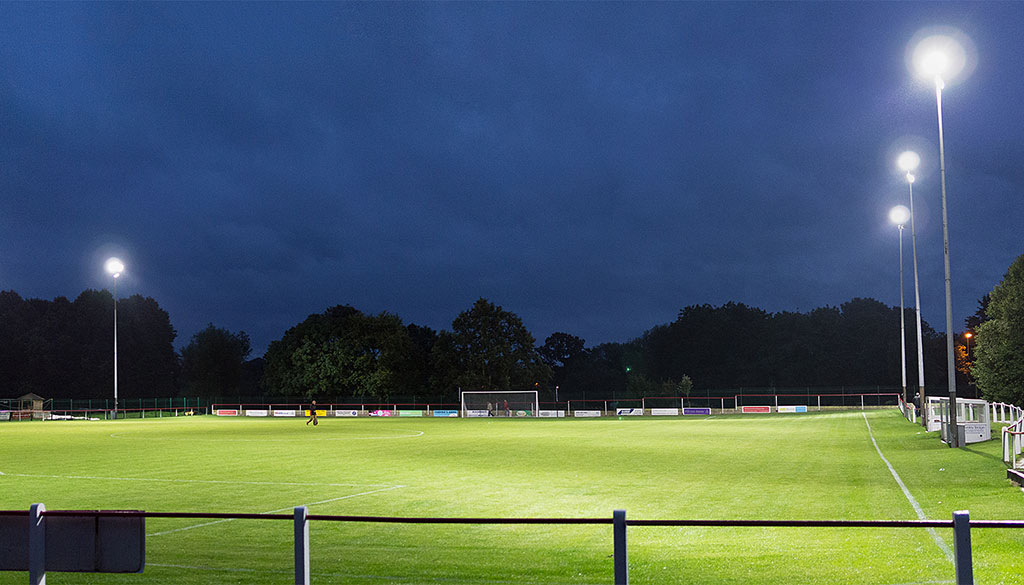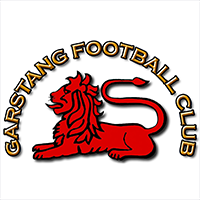
Emblematically Speaking - Garstang
Tue 6th November 2018 | Garstang | By Stewart Taylor
We start this week with a question. Which way should a Lion couchant face? This may be an example of what some may describe as a first world problem but, in one town at least, this is a valid discussion.
What we are talking about here relates to the town of Garstang and the representation of a lion couchant – in heraldic reams “couchant” is an old French word which readily translates into English as “lying down”.
But before we attempt to answer the question we need to go back a bit in time.
In the late 17th century, the town of Garstang was granted a Royal Charter and adopted the lion couchant as its seal. This is what we see as the predominant feature in the emblem of Garstang FC.
Students of classical heraldry, of which there must be several if not many amongst our loyal readership, will know that in classical heraldry the lion couchant is seen facing left to the observer.
Indeed, in classical heraldry most animals are seen facing left. In the case of the lion this is said to be because this was the dominant side of a knight who would, by convention, hold his sword in his right hand.
So far so good perhaps, but if we look in some detail at examples of the use of the seal around Garstang, we see examples of the lion facing to the right from the point of view of the observer.
One such is the emblem local rugby union team but there are a number of others.
Recent debate originated from the observation that the lion mural on St Thomas’ church wall faced to the left which, as we have seen, is “correct” in terms of classical heraldry. That then leads to the question of why are several of the examples facing right and which one is correct, right or left?
To cut a long story short, a brilliant compromise answer has been arrived at and it goes something like this. Whilst it is the case that a lion couchant should face left in classical heraldry, the lion in this case is derived not from a coat of arms but from a seal.
Such seals are not bound by the conventions of classical heraldry. In other words, both or either are correct. This explanation appeals greatly in that both sides of what may have become something of an acrimonious debate are satisfied.
The significance of the lion couchant seal to Garstang is such that the town coat of arms, granted in 1949, includes a lion but in a slightly different pose. The pose on the coat of arms could be described as “levant” which shows a kind of half rising pose.
It is considered that this is due to some rather crude redrawings of the lion down the years. Evidence for that comes from the appearance of a lion couchant in the crest of the de Lancaster family which held much of the district in medieval times although further study of that family reveals that the lion in question is sometimes seen in the “passant guardant” pose but, at the very least, does face left.
If we go back to the emblem of Garstang FC we note that the lion is facing left – correct, as we have seen in classical heraldic terms. Having said that, there are some examples of the football club emblem where the lion is facing right – also correct given the freedoms of design surrounding town seals.
As with many of the emblems used by our member clubs we see something which looks to be very simple but behind that simple symbolism lies many centuries of history and, even in these times, can be the subject of local debate.
With thanks to Bob Freeman of Garstang FC for his help in putting together this article.
 Emblematically Speaking - Garstang
Emblematically Speaking - Garstang
Tue 6th November 2018 | Garstang
By Stewart Taylor

We start this week with a question. Which way should a Lion couchant face? This may be an example of what some may describe as a first world problem but, in one town at least, this is a valid discussion.
What we are talking about here relates to the town of Garstang and the representation of a lion couchant – in heraldic reams “couchant” is an old French word which readily translates into English as “lying down”.
But before we attempt to answer the question we need to go back a bit in time.
In the late 17th century, the town of Garstang was granted a Royal Charter and adopted the lion couchant as its seal. This is what we see as the predominant feature in the emblem of Garstang FC.
Students of classical heraldry, of which there must be several if not many amongst our loyal readership, will know that in classical heraldry the lion couchant is seen facing left to the observer.
Indeed, in classical heraldry most animals are seen facing left. In the case of the lion this is said to be because this was the dominant side of a knight who would, by convention, hold his sword in his right hand.
So far so good perhaps, but if we look in some detail at examples of the use of the seal around Garstang, we see examples of the lion facing to the right from the point of view of the observer.
One such is the emblem local rugby union team but there are a number of others.
Recent debate originated from the observation that the lion mural on St Thomas’ church wall faced to the left which, as we have seen, is “correct” in terms of classical heraldry. That then leads to the question of why are several of the examples facing right and which one is correct, right or left?
To cut a long story short, a brilliant compromise answer has been arrived at and it goes something like this. Whilst it is the case that a lion couchant should face left in classical heraldry, the lion in this case is derived not from a coat of arms but from a seal.
Such seals are not bound by the conventions of classical heraldry. In other words, both or either are correct. This explanation appeals greatly in that both sides of what may have become something of an acrimonious debate are satisfied.
The significance of the lion couchant seal to Garstang is such that the town coat of arms, granted in 1949, includes a lion but in a slightly different pose. The pose on the coat of arms could be described as “levant” which shows a kind of half rising pose.
It is considered that this is due to some rather crude redrawings of the lion down the years. Evidence for that comes from the appearance of a lion couchant in the crest of the de Lancaster family which held much of the district in medieval times although further study of that family reveals that the lion in question is sometimes seen in the “passant guardant” pose but, at the very least, does face left.
If we go back to the emblem of Garstang FC we note that the lion is facing left – correct, as we have seen in classical heraldic terms. Having said that, there are some examples of the football club emblem where the lion is facing right – also correct given the freedoms of design surrounding town seals.
As with many of the emblems used by our member clubs we see something which looks to be very simple but behind that simple symbolism lies many centuries of history and, even in these times, can be the subject of local debate.
With thanks to Bob Freeman of Garstang FC for his help in putting together this article.


